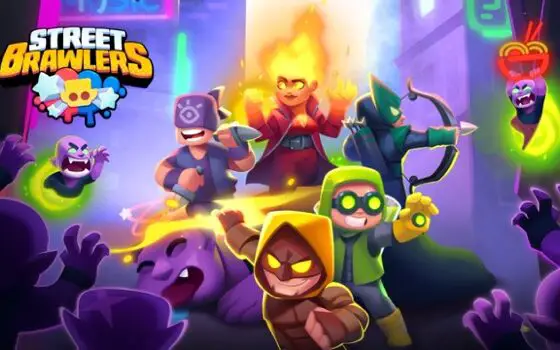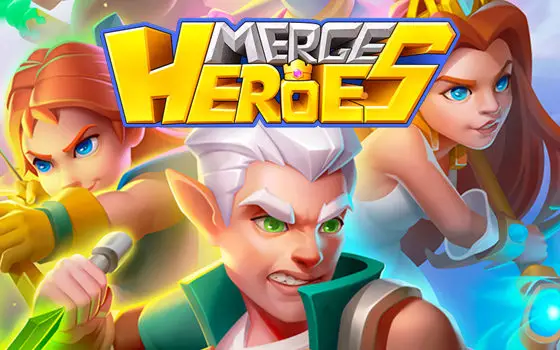Coming Home to Mobile
It’s not often that a port of a game is regarded with comparable praise to its original version. Usually, ports are clunky games, where sacrifices the developers made to squeeze the title into a compact package are plainly visible. Of course, there are strong examples like Old School RuneScape and some of the Final Fantasy games (such as FFIX), titles that are true to their original versions and outright playable. At $7.99 on Android and $6.99 on iOS, Lock’s Quest sits among these stronger ports, largely due to its inherent mechanics.
Originally released in 2008 for the Nintendo DS, Lock’s Quest was designed to utilize touch controls—a feature that translates seamlessly to mobile devices—and the loss of a second screen does little to hamper that experience: you select and slide unique turrets into place, defending castles, towns and fortresses along with important character units and locations. While some of the QTE events can be tricky in combination with the isometric perspective (even with smaller thumbs), this modest yet elegant game shines on a platform not too unlike the DS for which it was originally developed.
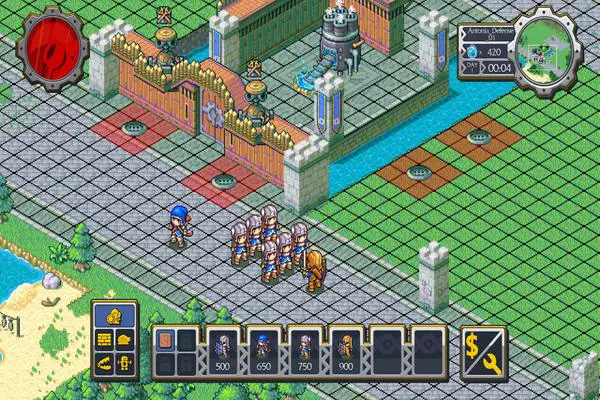
Well-Delivered Tactical Mechanics
Lock’s Quest is a tower defense game that uses real-time strategy balanced with careful planning. Each fight is part of a greater campaign lasting multiple battles. During this time, you spend and collect Source, an aptly named in-game resource, by killing Clockworks, your mechanical nemeses. Source is used to build your defenses before each battle and to repair turrets and walls during the heat of a fight. Buildable units can only be created before a fight begins, so you must situate them wisely. Additionally, Source accumulates over fights but only resets at the beginning of each campaign. This means you can easily pigeonhole yourself into a tough situation if you are too wasteful with your Source.
During battle, you control Lock, an Archineer of a nameless kingdom, capable of harnessing Source to build weaponry to protect his people. You have the option of punching your enemies on an auto-attack loop or repairing defenses by running near units and executing a QTE. As the game progresses, you gain access to more powerful passives, such as poisoning your enemies on hit, as well as combo abilities and other actions to enhance damage. At first glance, some of these mechanics may feel excessive, but they ultimately yield a more frantic battle. The battles work on a time limit system, meaning the waves of enemies never cease until the clock strikes zero. Like the best tower defense titles, the battles feel oppressive long before they are finished.
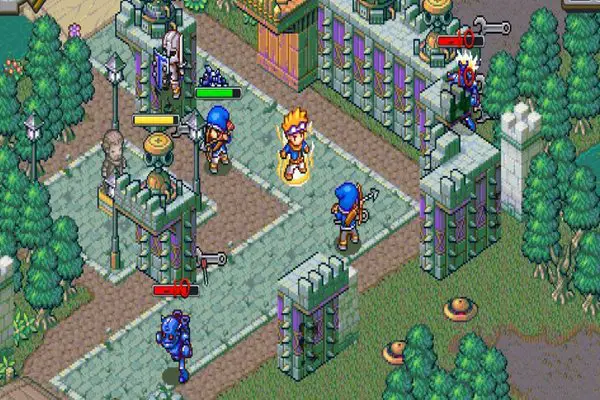
Beautiful Visuals, Lukewarm Atmosphere
The pixel graphics are plainly beautiful. Those nostalgic for the Legacy of Gokuor Mega Man Battle Network series will enjoy the work on display. The pixel art seems to be breathing in the way characters sway and bounce even while idle. Colors are rich and bright, and the characters move across the screen in a way that mostly looks like they are connected to the world rather than floating over it. While credit is due to the original Developer 5th Cell for their outstanding work, Digital Continue did a fantastic job on the remaster.
While the visual presentation is powerful, the story and sound design come off much staler. Most songs are repeated throughout, and while the midi tracks are charming, they are repeated and grow old quickly. The story, like a lot of generic RPG-types, comes off as a little uninspired, with notable evidence being the nameless kingdom and the main villain being called “Agony.” Personally, I find sound easy to ignore on mobile platforms, as I have ready access to my own music, but story is an understandable deal-breaker for those looking to delve deep into their games’ lore. That being said, this is a tower defense game, and the story is understandably ancillary from the outset.
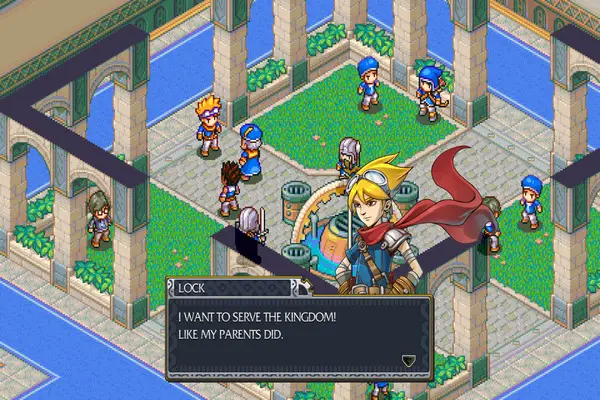
One of the Better Ways to Play
If you aren’t looking to drop a little more on a physical copy of Lock’s Quest on the DS, the mobile version is a more than suitable replacement. The controls map very similarly to the touch screen on the DS, and while touch controls are generally inferior to anything analog, the nature of the game doesn’t require quick displays of technical skill. The game has recently been ported to PC as well as PS4, where one might imagine the ported touch controls will wax clunky.
While not exactly remarkable, Lock’s Quest offers a capable tower defense experience. It will make you think, and you will spend a fair amount of time restarting battles, and perhaps even a save file. Lock’s Quest offers a Hard and Normal difficulty when you begin your save file, so you can freely tailor the experience to your desires. If you are looking for an inexpensive classic-style tower defense game that delivers on what it markets and offers a decent challenge, Lock’s Quest is for you.
Hardcore?
Kind of...
Locks Quest is short and offers an engaging experience on some levels, a lacking one on others. Overall, it is worth the money, and it feels as if it was meant to be played on a phone or tablet.





















